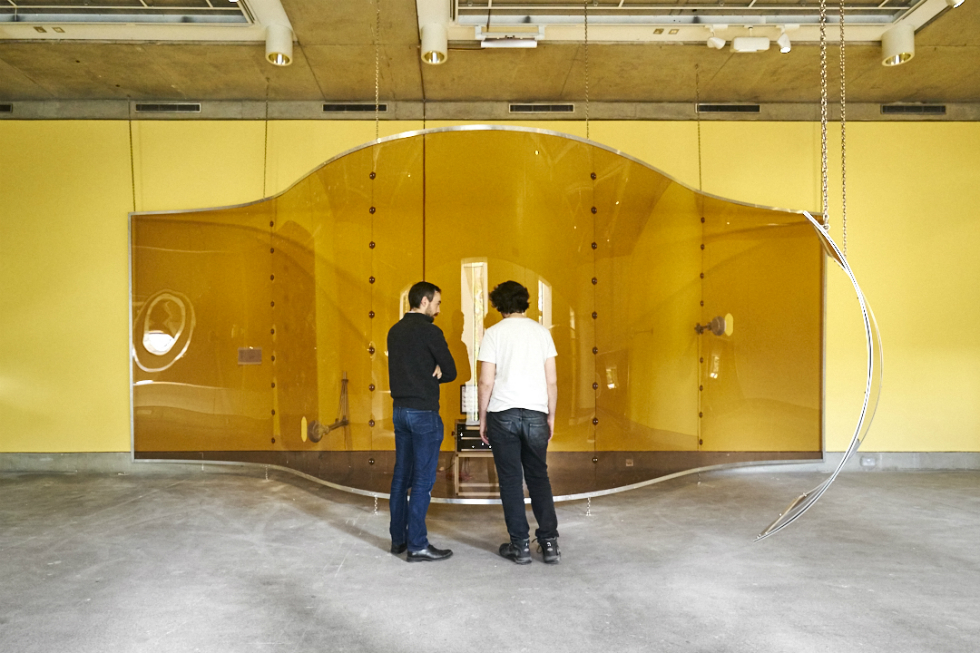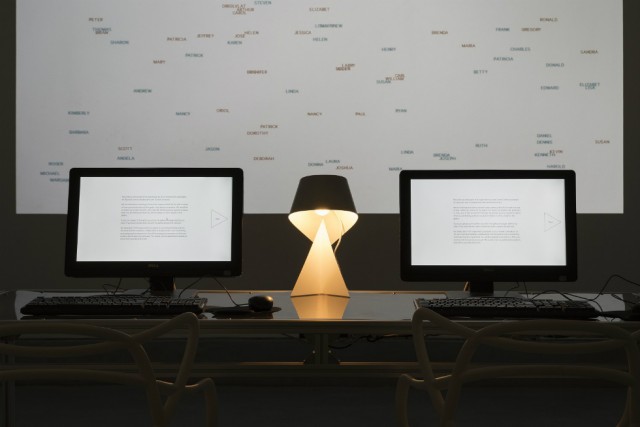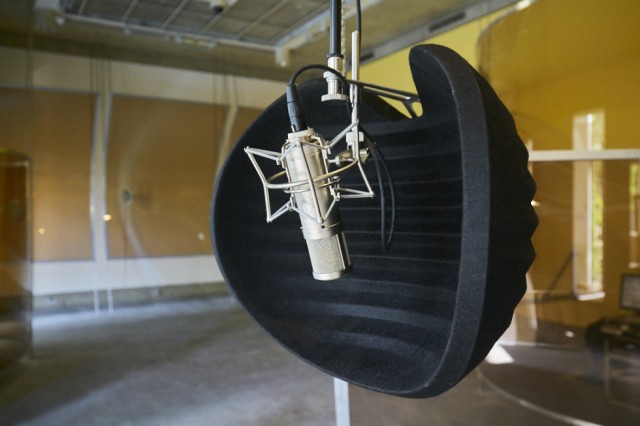Opening The Mouth: Emma Smith’s Euphonia — Reviewed

What does it mean (and take) to speak or sing into a microphone in front of other people? C. James Fagan speaks up about a new and experimental sound installation at The Bluecoat, Liverpool…
I’ve wanted to experience an Emma Smith artwork for some time now; ever since reading about her near-mystical exploration of energy and the voice, in a piece called Change in Energy = the Work. Unfortunately, neither me or her work were in the right place at the right time.
So naturally, I’m glad someone has done what I couldn’t do: brought her unique practice to Liverpool. Smith’s latest solo show, entitled Euphonia, is in The Bluecoat’s main galleries, and it is an investigation into how the human voice is central to the creation of social space and interaction.
When I enter The Bluecoat, both the Hub and galleries are full of babble and chatter. This seems to suggest a ghost or echo of the concerns that underpin Euphonia and Smith’s work in general.
But what is Euphonia? To put it simply, to the point of glibness, Euphonia is sound piece which reacts and changes when a visitor to the gallery speaks or intones into a microphone. This microphone is suspended within the main, ground floor space. In turn, it is surrounded by speakers and large screens of curving, smoky Perspex.
I think they act like baffle devices: there to reverberate and control the sounds. Visually, these screens appear to represent sound passing through space, as well as our own movement through that space.

I don’t want to spend too much time on describing the physical aspects, though it’s clear that the visual environment has been given as much thought as the aural environment. Equally, I wouldn’t want to spend too much time in attempting to describe the sounds that swim from the speakers – which ping into your brain and registers as beautiful.
What actually makes Euphonia work isn’t solely its physical presence within the gallery. Like Smith’s previous work, this is a continuum, part of a development of a collective language. The thread that runs through Smith’s work is the notion that language binds us. That within language, there is something that goes beyond syntax, beyond grammar, and acts directly with our brains, and that is what binds us. Smith is looking for a utopian language.
Now, some may draw parallels between this and Esperanto. Esperanto is language that is built from pre-existing languages, still using multiple grammars. While 5hz (the name Smith uses to refer to this language) comes from interaction and improvisation, it is formed from the people who take part in workshops and installations. It is language that is formed from intuition.
This new language is, hopefully, free from notions of correctness. The way you talk does instantly identify you. Your accent and the particular words that you use come preloaded with expectations regarding your background, who you are, and even what you’re capable of.

5hz would appear to be an attempt to circumvent all of this. To reset the presets and put communication back to a mother tongue. To have it straight from the horse’s mouth.
In the case of Euphonia, is travels directly from the microphone suspended in the gallery. That microphone, hid behind its soundproofing shell, is there to enable visitors to have a direct effect on the environment around them. Speak, sing, or intone into the microphone, and the sound around you should react; adjusting itself to the timbre of your voice.
Of course, during very busy periods in the gallery it’s difficult to determine the changes. Maybe my ears aren’t quite acute enough.
This brings me to my strange reaction to the piece. Faced with the microphone, I clam up. Even though I’m under no obligation to perform for this thing hanging there, just thinking about its presence and its reason for being there makes me feel very self-conscious. I know if I speak into the microphone then the galley and everyone around will hear my voice.
Even though I know my voice would become tone, somehow I fear that that tone would become unpleasant. That it would disturb and interrupt the collective voice. I can feel my whole mouth becoming rigid.
This may sound like a negative criticism of Euphonia. It’s not. Rather, it should be seen as an affirmation of the need for this project. For those self-conscious feelings are born in part of external, social judgements about my voice and your voice. Through our lives, we’ve been told to speak up, be quiet, speak properly, you can’t sing.
These are the problems which Euphonia, and Smith’s work as a whole, are attempting to address. To overturn. Hopefully we can all add our voice in time.
C. James Fagan
See Emma Smith’s Euphonia at The Bluecoat, Liverpool, until Sunday 24 June 2018 — FREE
Images courtesy The Bluecoat and Robert Battersby





